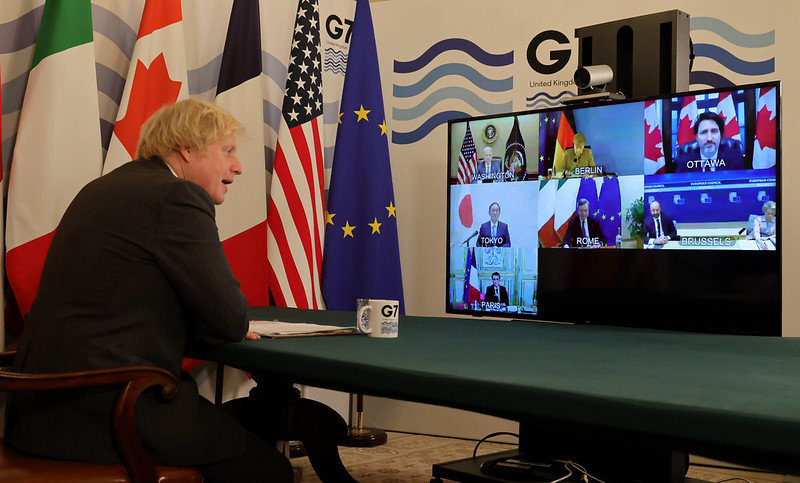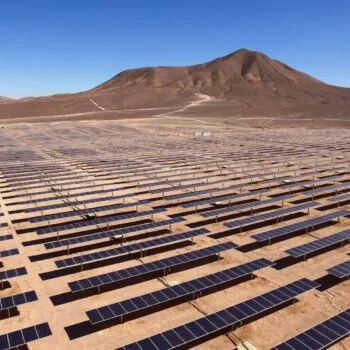The global energy architecture has undergone dramatic changes in recent years. This includes rapid decreases in the cost of solar, wind and storage technologies, development of low-carbon production and value chains, and the establishment of the global climate agenda. The politics of energy has been evolving as well, with China, Japan, and Korea joining the EU, the UK and others committing to “net zero” emissions by mid-century.
This will require deep decarbonisation of their energy systems. However, the systemic task of achieving complete economic transformation compatible with the Paris Agreement climate goal cannot be achieved by market forces or national policies alone. It requires a set of coordinated multilateral efforts in key sectors on both regional and global levels.
The current global energy architecture is out of step with the Paris Agreement
The present energy governance landscape is fragmented. This is in part due to the historic development of the modern energy system mirrored by the specialized “energy clubs” that emerged (including the IEA, IAEA, OECD, GECF, and IRENA). They are driven by traditional energy policy paradigms such as security of supply, economic efficiency and the development of (primarily) fossil fuel markets. This set of institutions has not been designed to tackle energy system decarbonisation in a comprehensive way.
In recent years, the G7 and G20 have strengthened their cooperation in areas with a “mission focus”. These include missions related to a sustainable and just energy transition, such as energy access, subsidies, energy efficiency and increasingly renewable energy. But as cooperation is voluntary, progress has been limited. Multilateral fora such as UN SEA4All and IRENA focus on sustainable decarbonisation of the global economy but lack funding and the ability to implement efficient policy instruments to drive transition. The Clean Energy Ministerial (CEM) and Mission Innovation (MI) work to scale up clean energy research, development, and policies and standards in key sectors. But issues including capacity building, shifting of consumer preferences, governance of technology and raw materials’ supply chains, creating standards and rules for decarbonisation, and stranded asset risks are largely unaddressed.
As the world gradually gets on track setting targets, the challenge is to match this with incentives, frameworks and regulations to accelerate decarbonisation of the global economy in a sustainable way. What is needed is a multi-level, multilateral global governance architecture that is mission-focused to keep up the pace and flexible to deal with uncertainty in the transition.
Reducing complexity while streamlining efforts at the multilateral level
The decarbonisation of energy systems and related sectors is not a one-approach-fits-all process and must be tailored to economic sectors, regional and local socio-economic needs and respective physical resource potential.
Sectoral fora (power, industry, transport etc.) or the definition of “deep decarbonisation missions” (100% renewable energy systems, urban and place-based transitions, shifting trade relations etc) could reduce complexity. Multilateral institutions should facilitate integration across sectors on the way to a post-Paris decarbonised economy.
The energy transition is also resulting in structural shifts in investment, trade, data, infrastructure spaces and socio-economic development which have profound geopolitical implications as they create new power balances. One of the major tasks of the new global governance architecture will be to ensure that these factors do not deter, but rather contribute to the decarbonization process.
Building shared leadership for global architecture
The new clean energy architecture needs to build shared leadership if it wants to succeed. This means efforts should include not just the major economies but all economies, including the least developed countries. Full engagement of provinces, cities, private sector, unions, NGOs, and others is essential to success. Financing institutions such as the World Bank and IMF should play a bigger role in shifting investments to clean technologies, supporting macroeconomic stability and growth in the transition.
Source-specific organizations such as the International Solar Alliance and country-led initiatives such as the EU’s Green Deal and China’s “Green BRI” have multiplied in recent years. This indicates the increasing geopolitical importance of the clean energy transition, but also highlighting the growing complexity of energy transition politics and diplomacy.
Multilateral platforms such as the Clean Energy Ministerial and the Energy Transition Council need to make sure this “clean leadership competition” is facilitating, not distorting progress towards rapid decarbonisation.
Next steps in the run up to COP26
There is a need to build a shared consensus amongst major players on the role of institutions and initiatives in driving deep decarbonization and how they relate to each other. This conversation will be kicked into high gear with US President Biden’s plans to relaunch the Major Economies Forum (MEF) at next week’s Leaders’ Summit on Climate. Some of the questions that need to be addressed in an open and inclusive manner include:
- As climate change has transitioned from peripheral impact on growth and development, how does the MEF relate to other leader-level processes (I.e. G7, G20) whose remits go beyond climate?
- How should the work of the MEF overlay with the various sectoral initiatives that have developed?
- What is the vision for shared leadership of these initiatives? How can the MEF encourage actions but minimize ‘initiativitis’, keep efforts on track and help identify and fill gaps?
At the joint CEM/MI June meeting in Chile, countries must discuss how to make these fora fit to drive decarbonization at the pace needed to achieve the Paris goals. As identified by EU Foreign Affairs Ministers in January, this could be an opportunity to work towards ensuring that international energy institutions like IEA and IRENA can drive deep decarbonization.


